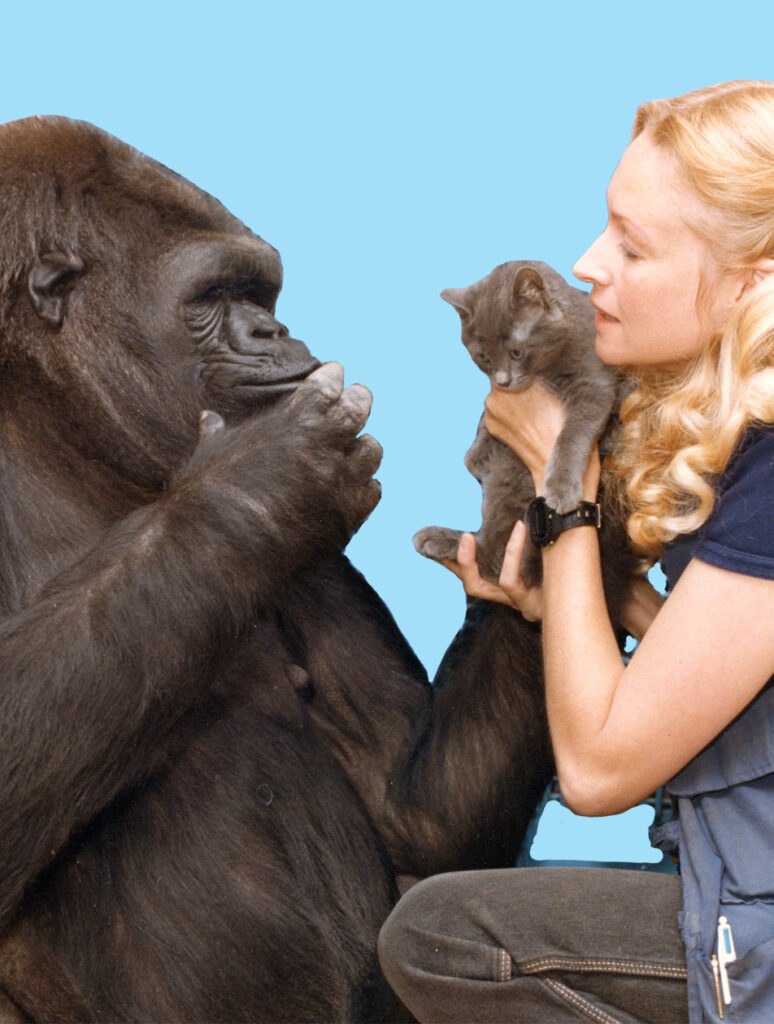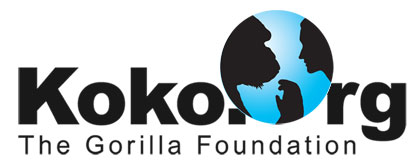
Goals
1) Preserve and digitize 5 decades of interspecies communication multimedia data featuring gorillas Koko, Michael and Ndume, and store the data in an interactive database (KokoArc).
2) Analyze the data for trends in gorilla sign language use, acquisition, comprehension, production, and creativity, as well as other forms of communication (art, written/spoken English comprehension, etc).
3) Identify untaught (natural) gorilla gestures versus taught ASL (American Sign Language) signs that are present within captive and free-living gorilla groups.
4) Use the data to advance our understanding of gorillas, and as a tool for public education, caregiver training, and conservation.
Why this is Important
Gorillas remain a critically endangered species in the wild and their care in captivity is unacceptable — given their intellectual and emotional capacity, similarities with humans and self-awareness. The KokoArc database and its application to interspecies communication has the potential to solve both problems by increasing understanding of, and empathy for, our fellow great apes.
Progress
1) A multimedia relational database, called KokoArc, has been designed and implemented (via Filemaker Pro) in a way that allows us to track all parameters of interest in our interspecies communication video and text data, and share it remotely via the internet.
2) Approximately 2 thousand hours of video footage have been digitized (our complete 5-decade collection).
3) Approximately 40 thousand pages of interspecies communication research diary notes have been scanned (our complete 5-decade collection)
4) We are posting excerpts from the KokoArc database every week on our website, social media and in our weekly Koko eNewsletters.
Plans
1) Continue sharing excerpts of our KokoArc video archive each week via our Koko Video eNewsletter.
2) Extract excerpts from our KokoArc video archive to update our Koko Signs app with new Signs and Conversations.
3) Utilize generative AI to analyze our KokoArc videos and transcribe our handwritten reseach diaries (we are actively looking for the right AI partner now).
4) Share the results of our analysis with other researchers to advance our knowledge of great ape linguistics and culture — and apply this to advance gorilla conservation and care.
5) House our entire “physical” Project Koko Archive at Stanford University Library.

